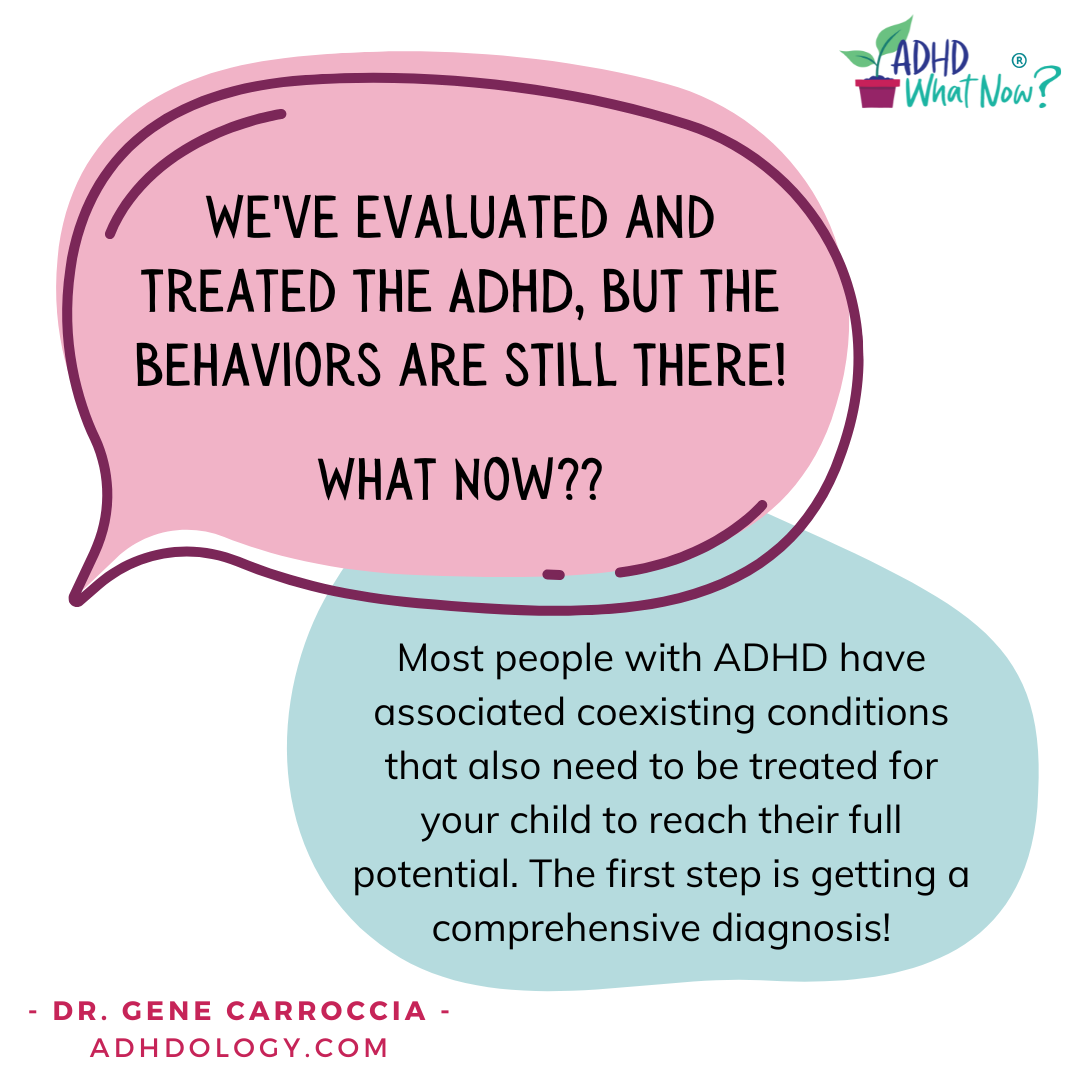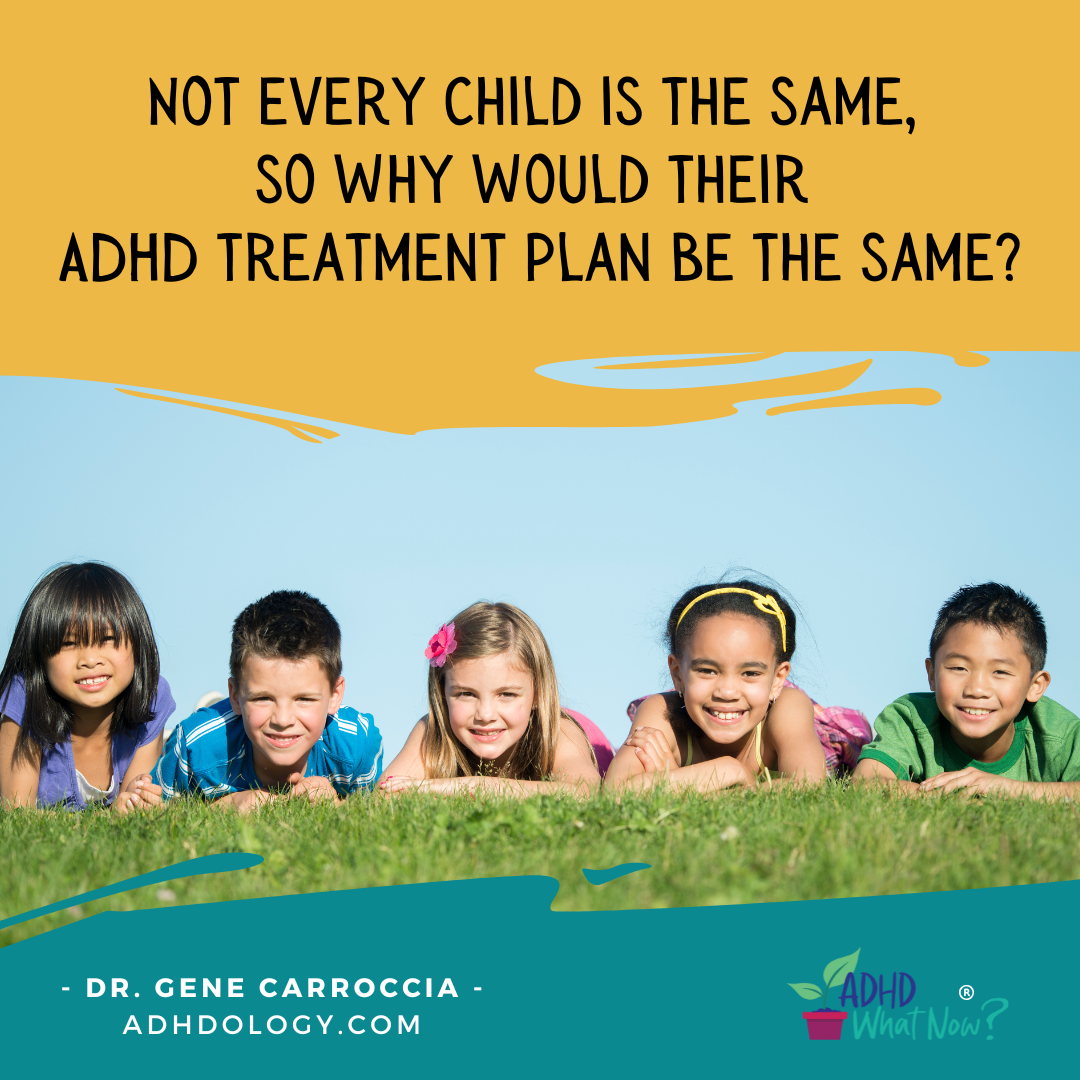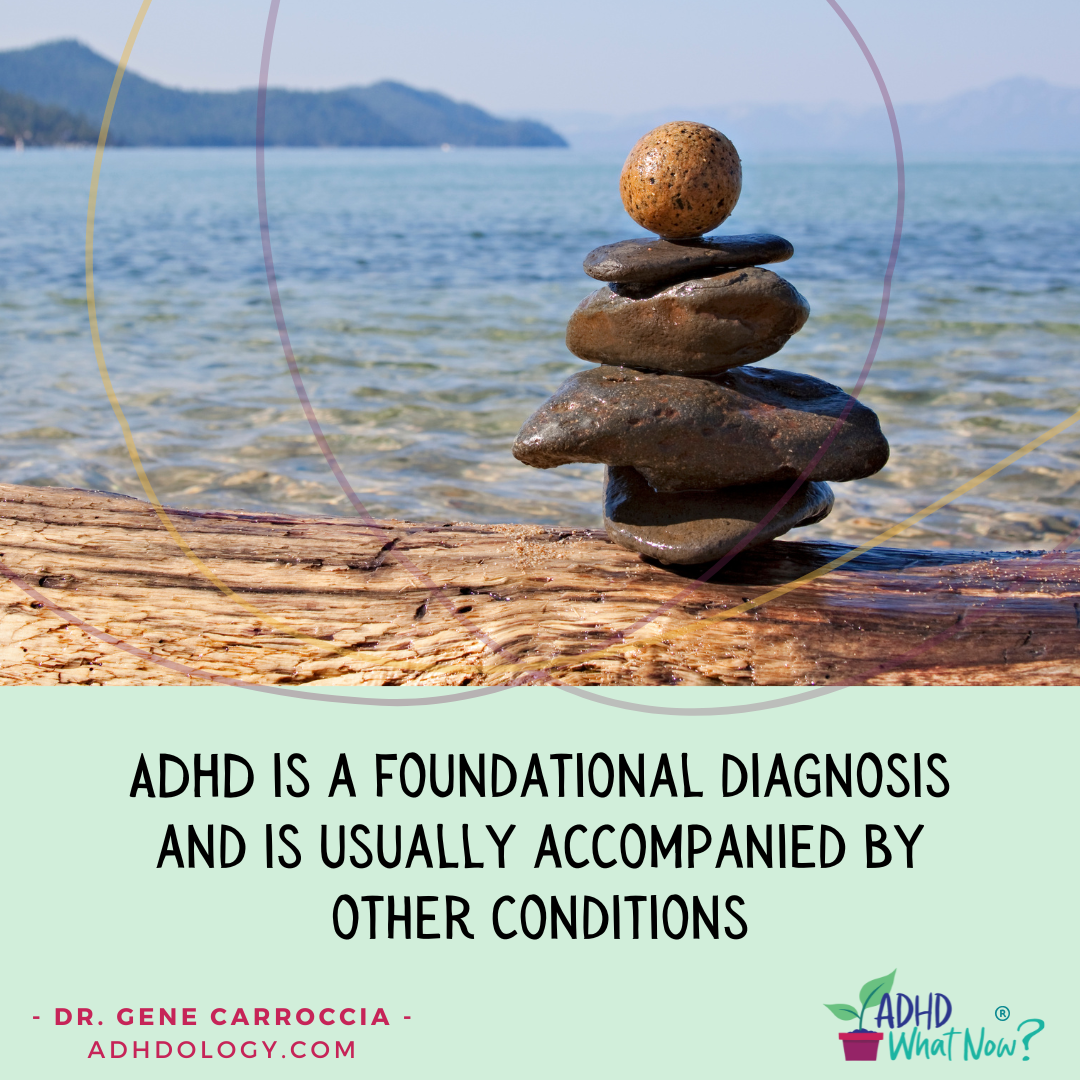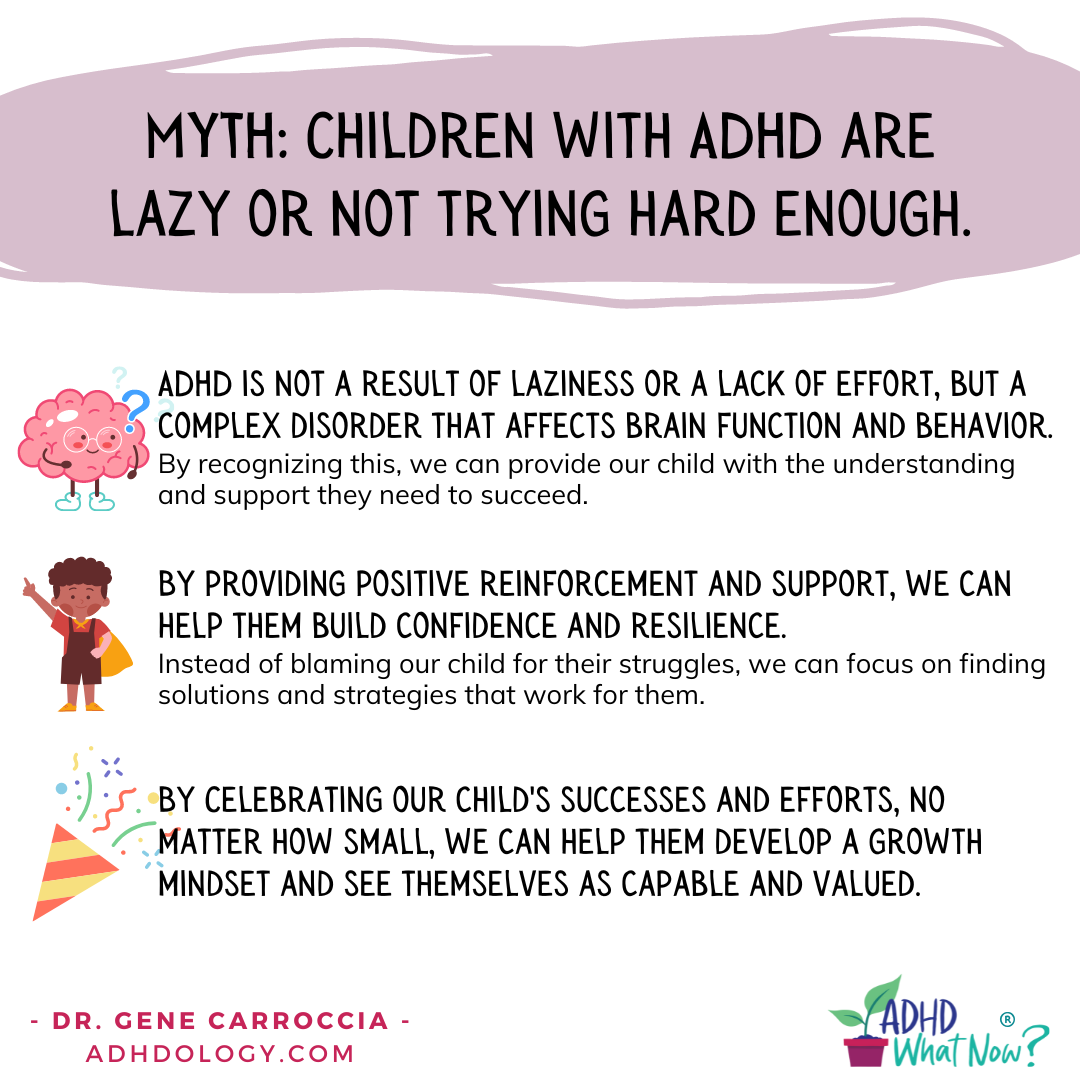Is It ADHD or Something Else? How to Get a Full Diagnosis
Apr 11, 2023Does my kid really have ADHD or is it something else? I asked myself this a lot and it wasn't until I got a full diagnosis of my kiddo from multiple doctors that I finally got my answers.
But I wish it hadn't taken me so long to understand coexisting conditions and where to start, so I want to help save you some time!
In this video, Dr. Gene Carroccia, a renowned clinical psychologist and author of two groundbreaking books on ADHD - "Treating ADHD in Children and Adolescents" and "Evaluating ADHD", shares his expert insights on the first step towards creating a treatment plan for ADHD - evaluating for ADHD and other coexisting conditions.
He emphasizes the crucial importance of accurate diagnosis and the identification of coexisting conditions, as up to 80% of children and many adults with ADHD have at least one other condition. But don't worry, he's got your back!
Dr. Carroccia provides original checklists for over 65 conditions in his second book and suggests seeking out the right providers for each condition. For parents looking for valuable resources, Dr. Carroccia's website and the ADHD-What Now? website offer a wealth of information to help you on your journey towards better health and success. Get ready to empower yourself with the knowledge and insights you need to overcome ADHD and achieve greatness!
LINKS
Dr. Carroccia's website: https://adhdology.com/
SHAREABLE GRAPHICS




FULL TRANSCRIPT
Veronica: Hey there. So your kiddo is constantly interrupting, maybe not engaging in friendships the way you see other kids their age doing maybe you're getting notes home from the school or homework is just exceptionally hard. And getting out the door with actually having shoes on on time feels nearly impossible.
Maybe you're suspecting that your kiddo has ADHD and you are trying to figure out if that's true. So what are the first steps to doing that?
My name's Veronica Hunter. I am the founder of ADHD -What Now? And today we have Dr. Gene Carroccia, who is going to walk through what I think is one of the key first steps.
Now, a lot of people will think it's very simple to just go call and get an A DHD evaluation. But there are some things that I want you to know about as you're going through that process.
We got a diagnosis that was great. A few years later, we were still trying to figure out what would help us to achieve the harmony in life that we were really looking for. And the key to it was what Dr. Gene is going to share in this video.
Dr. Carroccia: I can give you a little bit of background about me so you can learn a little bit about me. So I'm a clinical psychologist. I'm a vice president at a large healthcare organization. Now, I work with, over the years, hundreds and hundreds of children, adolescents, adults, and families.
And I have two books, one that came out last year, which is what we're going to be talking about today, which is 'Treating ADHD in Children and Adolescents'. And this book is really for parents, for educators, and for clinicians. And then I have a second book that came out this year, which is called 'Evaluating ADHD'. And it talks about how to evaluate ADHD, but also coexisting conditions.
So as a licensed clinical psychologist, I was also a training director of a program to train clinical psychologists. And in this training program, I created a lot of materials, my own materials to train new trainees so that they knew how to evaluate and treat ADHD. And over the years, I really realized that there just wasn't enough training material out there for clinicians.
And I really wanted to contribute and do that. And then I also had a lot of materials on coexisting conditions, which really is not adequately addressed, I think, often when people have ADHD, whether they're children or adults.
And so over the years, I am amassed all this material and found along the way that other clinicians that were out in the field just didn't have enough training as well, and were hungry and looking for materials. And so I decided to put all this together and put the book out there.
Also, backing up, over the years, I created a lot of handouts for the patients that I would work with and their families on ADHD, and I started to amass a lot of this information and I realized that, gee, this is probably a book.
And people were really responding very well to my materials and thought they were very helpful. And again, I wanted to create a template and a roadmap, not just for families, which is very important, but also for clinicians so that they could really use this model in their own treatment with clients. And then also for ADHD coaches to use this, and then of course, educators as well.
So let's dive in. Let's talk about what the six steps are. The first step is evaluating ADHD and other coexisting conditions.
So we really always have to start at the beginning. And the beginning is the diagnostics. So we really need to understand, does somebody have true ADHD? Do they have coexisting conditions along with ADHD, sometimes called complex ADHD? I'm not thrilled about that term, but some people use it.
Or do they have conditions that are creating ADHD-like symptoms when true ADHD doesn't exist? And that happens too. And so we really want to be as accurate as possible because once we're identifying the conditions, then we want to create a treatment plan, a treatment approach.
We want to get the right providers and support so that the individual, the child, adolescent, adult, whoever it is, is able to get the right kind of care. And this is what I've seen many, many times where the condition ADHD isn't properly diagnosed, it's misdiagnosed, or ADHD is diagnosed, but the coexisting conditions aren't diagnosed.
And when that happens, people don't tend, they tend not to have as much success or progress. And this is really a very heartbreaking experience because families start to lose hope. Providers start to get frustrated because they're feeling like, gee, what we're doing isn't working and people aren't having answers. And then sometimes families give up and they just say, well, I tried medication, or I tried therapy, or, you know, I tried working with these other providers, nothing worked, and you know, nobody can help me.
And that's, you know, that's really an unfortunate situation. There is hope, there is the right treatment, but we have to start at the beginning. We have to have the right conditions diagnosed, and then you have to find the right providers that are going to address those. So that's why this is step one.
Now, coexisting conditions is part of ADHD. This is a really important message. ADHD is now considered a foundational disorder, and it usually goes along, it usually is accompanied by other conditions.
Up to 80% of children and more adults that our clinic referred have at least one coexisting condition. 50% have at least two conditions, and 20% have at least three coexisting conditions.
In addition to ADHD, this is really important. People tend to miss other conditions because they tend to think, oh gee, that's part of the ADHD, or, gee, they're just kind of a little bit different, oh, well. And they're not really understanding the impact of these other conditions.
And it's really important to do that because if you can identify them, then you can get the right providers and then you can get some progress and some treatment.
So in my second book, evaluating ADHD, I've identified over 65 conditions, and I have original checklists. And so this should help families and also help providers who want to use my approach.
But however it's done, it's really important to do this. I have a lot of statistics that we don't have time to share today, but, you know, sleep conditions are highly prevalent. Anxiety and depression, very, very common. Learning disorders are very common. Sensory processing conditions, up to 40% of children have sensory processing problems and ADHD.
So there's a lot of conditions out there. Families aren't supposed to know about these. If you want to do some reading, you can, but we want providers to do as much screening as possible. And then the last aspect of this step is if other conditions are suspected or detected, then you want to go to the right providers to chase some of those down.
So if there's sensory processing issues, you might go to an occupational therapist, you might go to a neuro developmental assessment for a learning disorder, all kinds of different providers for different treatments. In my second book, I talk about all these, and I also mentioned this a little bit in one of my articles on coexisting conditions on my website.
Veronica: So hope you enjoyed learning about this key, which is really to get a comprehensive evaluation that helps you assess for other coexisting conditions. This can really help expedite your journey in supporting your kiddos so that they can really step into being their best selves and enjoying their lives as happy and healthy individuals that can live independently, which I know is the goal that you have for your kiddo and the harmony that you want to experience in your household.
If you would like to hear more or learn more from Dr. Carroccia, on his website linked above, there are a ton of great resources that I would recommend.
Additionally, I'd invite you to go to WhatNowADHD.com. There, I have some free resources that you would enjoy as well. Thank you and see you there.